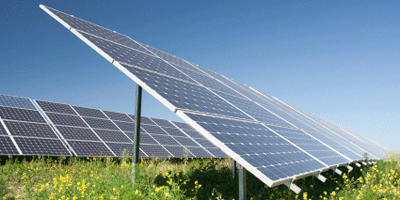Solar Cell Efficiency through Thick and Thin
To bring down the cost per kilowatt of electricity from solar cells, designers propose making the active semiconductor material thinner. A thinner slab of semiconductor also permits performance enhancement owing to surface plasmon resonances. Together, these factors place ultrathin solar cell layers in the realm of near-field optics: unlike optical structures such as telescope lenses, one or more physical dimensions are the same size or smaller than an electromagnetic wavelength.
Calculations become more difficult to manage in the near field than for far field, where researchers can rely on the tools of ray optics. To fill this need, Avi Niv at the University of California, Berkeley, and colleagues present in Physical Review Letters an improved approach to calculating voltage, current, and efficiency of a solar cell in the near-field regime. In particular they are able to calculate losses due to spontaneous emission from electron-hole recombination. Niv et al. report they can map out peaks in spontaneous emission for various film thicknesses and identify wavelengths where the losses are highest.
The authors’ comprehensive approach allows performance properties and influences on efficiency to be calculated, not just at the extremes of thick and thin, but for a range of film thickness, and should guide researchers to new designs for high-efficiency generation. – David Voss





